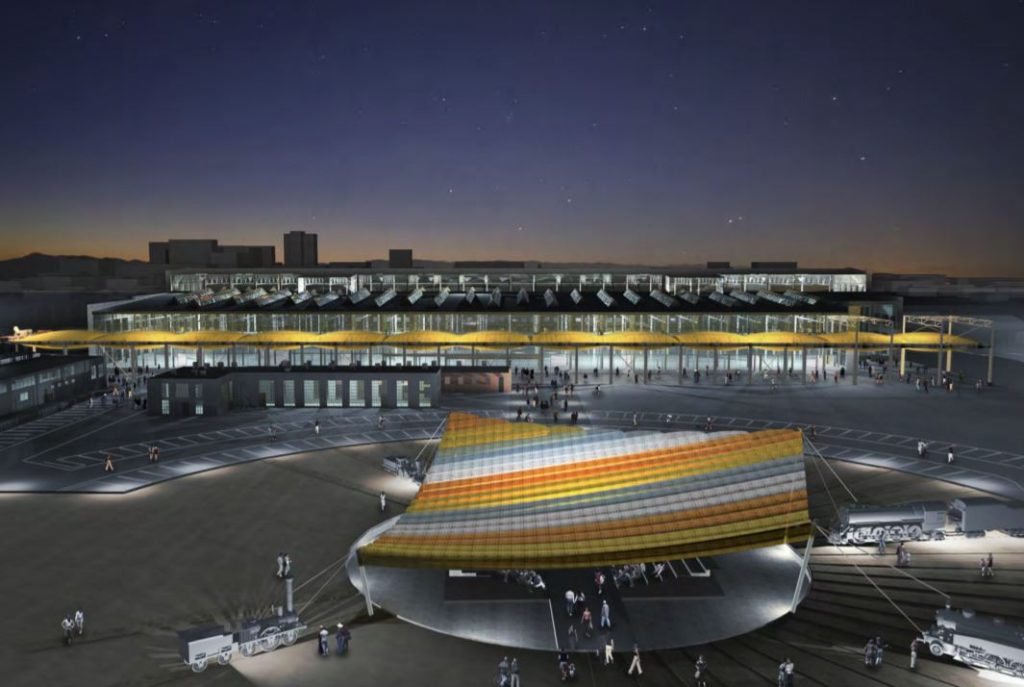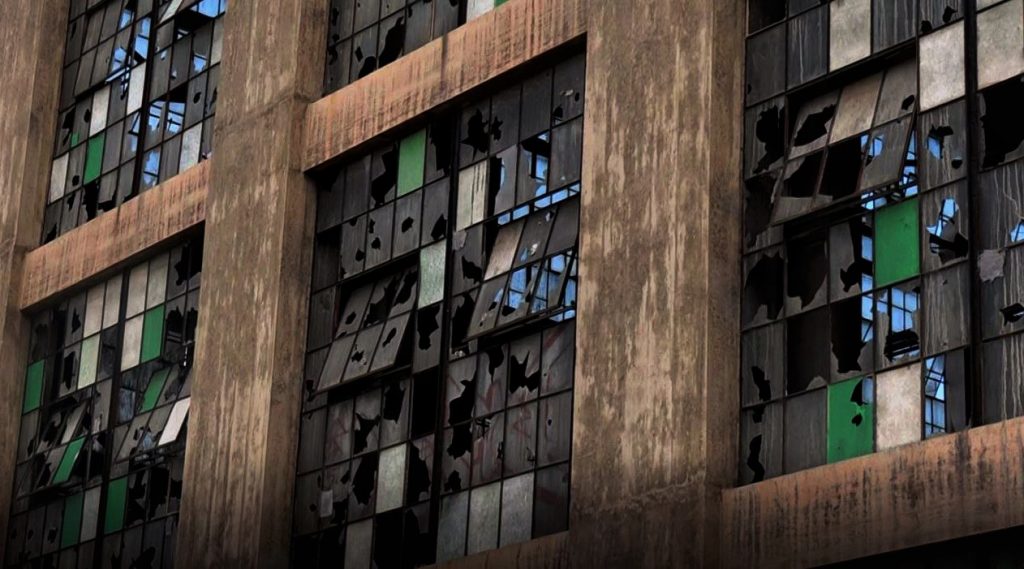Richard Gonzalez’ father worked at the Albuquerque Rail Yards for nearly 30 years, Gonzalez himself was born just down the street from the site’s largest building, the Machine Shop, where broken trains would go for repair.
“I remember stories that my father would tell me about how hard and exhausting it was to work at the Rail Yards but he said he would never want to work anywhere else,” Gonzalez said.
Looking at the site over time, the City of Albuquerque and developers have continued to struggle in renovating the historic landmark. Original concrete buildings, reassembled brick shops, and rusted metal fencing are seen as the heart of a neighborhood that dates back to the late 1880s.
The City has recently developed a Master Plan to reconstruct the Rail Yards site into a useful and safe environment.

developed for the redevelopment of the Rail Yards.
“The master plan contains a mixture of policies, concepts and some regulations,” said Council Planning Manager, Petra Morris. “It basically lists all the uses for the various portions of the site.”
Use of the historic Rail Yards site in Albuquerque began in the 1880s, where it acted as a fully functioning steam locomotive repair location until it was torn down and rebuilt in 1915 to compensate for the growing industry.
“The visually unexciting concrete pit is actually the heart of the site because that’s how they could move any piece on the site in any direction.”
Petra Morris, Council Planning Manager
The railroads helped Albuquerque transition into a modern industrial center. Mainly built by the Atchison, Topeka & Santa Fe Railway, the locomotive shops at the rail yards were constructed to maintain and repair steam locomotive trains used throughout the southwest.
“My father would always tell me how proud he was of the skills he acquired from working every day to make and repair the pieces for the engines,” Gonzalez said.
The Rail Yards experienced peak employment level during World War II, over 1,500 people would work on the site each day. Every 400,000 miles each steam locomotive would be taken apart completely.
“At one point, a quarter of Albuquerque’s population was employed by the rail yards, the payroll coming out of the rail yards had a huge economic impact in Albuquerque every week,” Morris said.
Though many of the buildings we see today have been abandoned, they once served a purpose. From the Machine, boiler and Blacksmith shop, to the fluze and tender repair each building served as a vital part of the process.
“Between the two buildings, the visually unexciting concrete pit is actually the heart of the site because that’s how they could move any piece on the site in any direction,” Morris said.
After decades of use, the site lost passengers and was abandoned. The rail yards, still in use for storage and special events through the 1990s, it eventually was purchased by the city in 2007.
Following the purchase of the site, a Rail Yards Advisory Board was created, leaving all contracts and decisions to be voted on by representatives from the surrounding neighborhoods and council members.
The Advisory Board spent over a year putting together a request for proposals for a Master Developer, and after three responses, Samitaur Constructs was chosen.
“There was some work done on the site that the city paid for, there was an archeological study and an environmental study was done but it never really moved much further than that,” Morris said.
Samituar Constructs then went through a two-year process drafting and putting together the master plan. The main goal of this plan was to find new, sustainable uses for the Rail Yards site that would preserve its historic architecture and complement the surrounding neighborhoods. The communities emphasized that the site include cultural and employment buildings in order for members to create a working relationship with the site once again.
People in the surrounding neighborhoods, where many of the rail workers once lived, are familiar with the rail yards and this struggling process, however, local artists and photographers see the redevelopment in a different way.
“The Rail Yards are a true staple to the City of Albuquerque and to take something like that away…I just don’t get it,” local photographer, Patrick Smith said. “I have used the yards as a backdrop for years and it has become a part of who I am as a photographer.”

Yards currently look like.
Even though the contract with the city and Samituar Constructs ended in 2012, the proposed outline is still the basis for the future. The city of Albuquerque is still open to changing the concepts and design of Samituars master plan, nothing is finalized.
The finished plan designed for retail stores, cultural services, new businesses, workforce housing and underground parking. Opening up a site that has been fenced off, guarded and closed to the public for many years.
“I hope the progression contributes to Albuquerque’s growth,” Smith said. “But I don’t see everyone getting on board with the changes right away.”
Earlier this year, Central New Mexico Community College President, Katharine Winograd and Mayor Tim Keller signed a Memorandum of Understanding to announce the idea of creating a Film Production Center of Excellence as part of a plan to redevelop the Rail Yards.
There has been no start date confirmed, but the project team will spend several months working through specific design guidelines with state historic preservation officials in order to find another developer.
Hayley Estrada and Steven DeAnda are reporters for the New Mexico News Port they can be contacted on Twitter @Est3Hayley and @stevendeanda15.